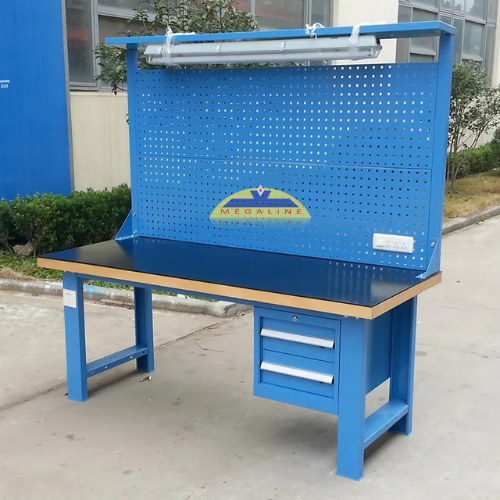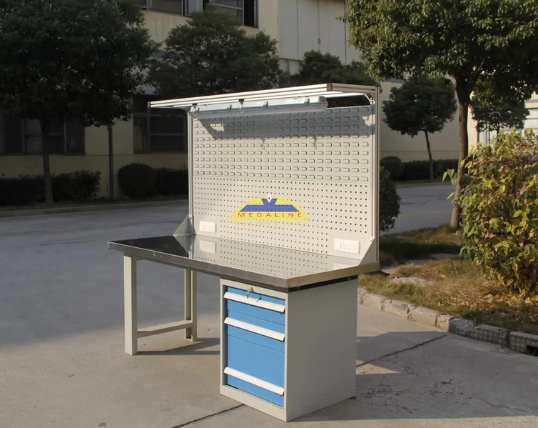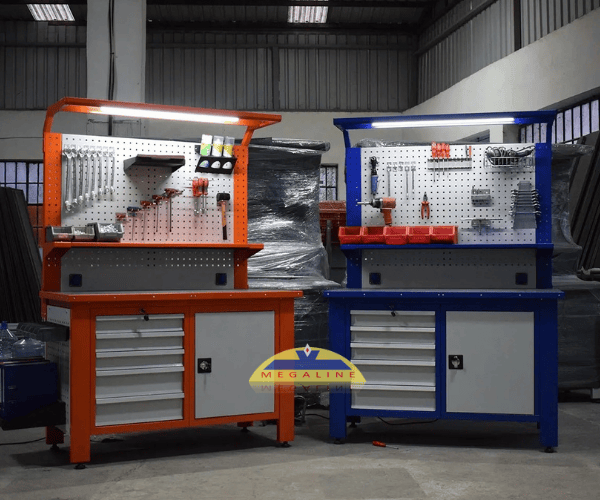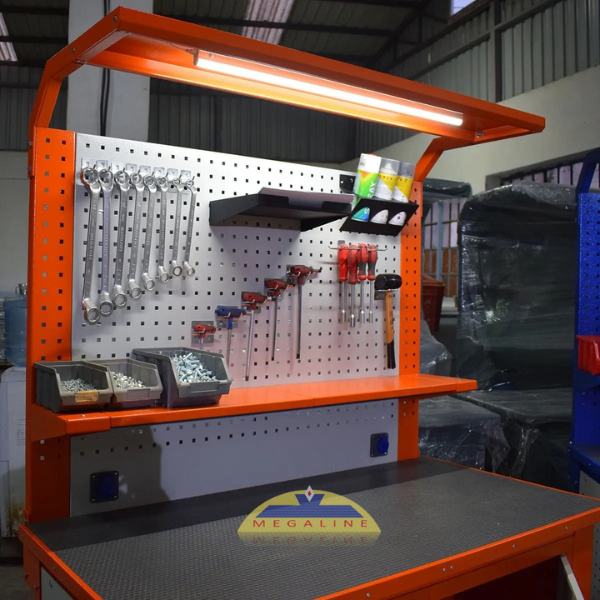DA NANG: 126 Dien Bien Phu, Thanh Khe, Da Nang
HO CHI MINH: 140 Vo Van Kiet, District 1, Ho Chi Minh
DA NANG: 126 Dien Bien Phu, Thanh Khe, Da Nang
HO CHI MINH: 140 Vo Van Kiet, District 1, Ho Chi Minh
A mechanical workbench is a specialized piece of equipment used in machining and assembly, designed to secure workpieces and support precise operations. With a sturdy, high load-bearing design, it is ideal for mechanical workshops, repair facilities, and machinery assembly lines.
Mechanical workbenches are indispensable equipment in mechanical workshops, metalworking, machinery repair, and related industries. They serve as a platform for tasks such as cutting, filing, grinding, assembling, and measuring mechanical parts with high precision. Featuring a sturdy and durable design, mechanical workbenches enhance work efficiency and provide a convenient environment for mechanics to perform mechanical operations with ease.
A standard mechanical workbench typically consists of the following main components:

Mechanical workbenches play a crucial role in various manufacturing and repair stages:
Depending on the intended use, mechanical workbenches can be categorized as follows:

When choosing a mechanical workbench, consider the following factors:


Refer to:
Mechanical workbenches are essential equipment in the mechanical industry, helping to improve work efficiency, ensure accuracy, and enhance safety for users. When selecting a workbench, carefully consider the size, material, and functionality to best meet work requirements. Investing in a quality workbench will help optimize workflows and improve precision in mechanical machining.
Megaline specializes in machining and installing mechanical workbenches according to required dimensions, meeting all usage needs in the mechanical, manufacturing, and repair industries. With a team of experienced technicians, we are committed to providing high-durability, load-bearing products that ensure accuracy during operation. Megaline mechanical workbenches are flexibly designed, with customizable dimensions, tabletop materials (steel, wood, stainless steel), and additional drawers and tool shelves upon request. Contact us now for consultation and a detailed quotation!
Contact Information:
Hotline: 0934023546
Head Office: No. 3, Sunrise E, The Manor Central Park Urban Area, Nguyen Xien Street, Dai Kim Ward, Hoang Mai District, Hanoi City
Website: megaline.com.vn – Cleanroom and Industrial Equipment
Assembly Processing
Assembly Processing
Assembly Processing
Assembly Processing
Assembly Processing
Assembly Processing
Assembly Processing
Assembly Processing
Reviews
There are no reviews yet.